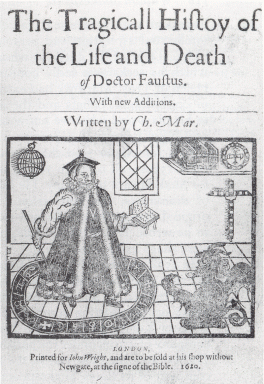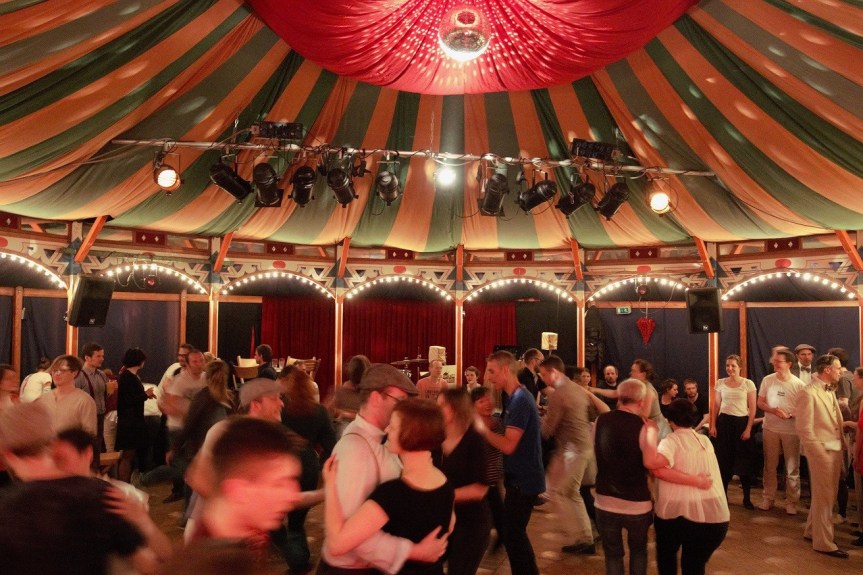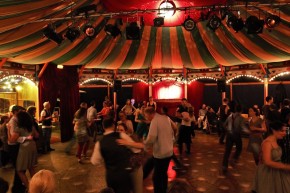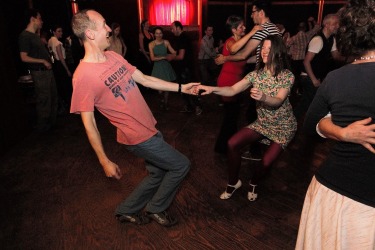Later this week, the O’Reilly Theatre, Keble College, Oxford will host a production of Christopher Marlowe’s play, Dr. Faustus. The endlessly fascinating legend of Faust has German origins – and a real man behind the myth, as OGN Coordinator, Madeleine Brook, explains.
The outlines of the popular legend of Faust are relatively simple. He is the man who, ambitious and hungry for knowledge, practises magic and sorcery, eventually making a pact with the devil: in return for knowledge and power, he signs a contract in his own blood, promising his soul to the devil after a period of twenty-four years has elapsed. In general, these years are filled with success for Faust, but his death is inevitable and gruesome, as he pays for his hubris and the devil claims his due. It is a story that has been retold and reimagined in numerous permutations across Europe ever since the sixteenth century: from Marlowe and Goethe to Rembrandt, Wagner, Bulgakov, and more, the Faust material has been an inspiration in all the art forms.

However, the story in its earliest surviving written and printed form – and the version on which Christopher Marlowe’s Doctor Faustus is largely based – claims to be more than just a work of fiction. The anonymous Historia von D. Johann Fausten, published in Frankfurt am Main in 1587 by Johann Spies and intended as a stern warning to Christians (and Lutheran Christians in particular) against falling away from God, claims that it contains more than just a passing reference to historical fact. And, indeed, although the shaping of the literary figure of Faust across the ages owes something to aspects of antique, early Christian, and medieval myth in the figures of Prometheus, Simon Magus, and St. Theophilus, among others, behind it all there is documentary evidence of a man calling himself Faustus in the late fifteenth and sixteenth centuries.
Admittedly, there are only a very few sources that allow the historian to draw reliable conclusions about the historical Faustus, his biography, and his character. This, of course, contributes to his modern day fascination, and indeed the scholarly search for the ‘real’ Faustus goes back to the late seventeenth and early eighteenth centuries. The discovery of new documents in the nineteenth and twentieth centuries has resulted in a re-examination of the previously known sources from the sixteenth century, though opinion is still divided on a number of aspects to do with the Faust story, the historical Faust and his development into a legend.

Recent research suggests that the historical Faustus was born Georg (or Jörg – although Johann and Johann Georg have also been suggested by earlier work) in a town called Helmstadt, not far from Heidelberg (again, earlier research has suggested Knittlingen, also in southern Germany, but there are some grounds for mistrusting the source on which this is based), in the mid-1460s, and so for some time he went by the name Georg Helmstetter. In 1483 he began studying at the University of Heidelberg (itself founded only a century earlier) and four years later had achieved his Master of Philosophy degree. It was in this period that he developed an interest in astrology, which lies at the foundation of his chequered legend. It is worth noting at this point that astrology was not a debunked area of knowledge at this time, but was taken seriously as a scientific discipline by many in society and was practised alongside other fields of scholarship, such as astronomy, philosophy, alchemy, and mathematics.

Scholars were active in these areas and present at the courts of rulers across Europe. It is known that Helmstetter prepared horoscopes in this early stage of his career and the correlation of certain details in the documents surrounding these prognostications and the claimed qualifications of a certain ‘Magister Georgius Sabellicus, Faustus iunior’ against whom the abbot Johannes Trithemius railed in a polemical letter to the astrologer Johannes Virdung von Hassfurt in 1507 indicate that these two men are the same. This letter shows Faustus as an astrologer with patrons in high places, but Trimethius also emphasizes the man’s wide-ranging interest in the occult, heavily suggesting that he went beyond the bounds of licit natural magic.
This suggestion of the practice of darker magic and consorting with the devil is, as Frank Baron has pointed out, not an accusation that is repeated in other sources concerning Faustus’s life until much later, and these should be seen in the context of the Reformation – and most especially in the reception and development of the legacy of Martin Luther by Philipp Melanchthon and subsequently internal conflicts in the Lutheran Church in the late sixteenth century. The historical Faustus appears to have died sometime in the 1540s – in old age, rather defying notions of a twenty-four-year contract, though the exact nature of his demise is uncertain. Nevertheless, the accusations of sorcery and a diabolical death were taken up in Spies’s and Marlowe’s renderings of the legend and resound to this day.
Madeleine Brook, OGN Coordinator
Interested in reading more? Here are some tips:
Frank Baron, ‘Faustus of the Sixteenth Century: His Life, Legend, and Myth’, in J.M. van der Laan & A. Weeks (eds), The Faustian Century: German Literature and Culture in the Age of Luther and Faustus (New York, 2013). Baron has also published a version of this online.
Urs Leo Gantenbein, ‘Converging Magical Legends: Faustus, Paracelsus, and Trithemius’, in van der Laan/Weeks, The Faustian Century.
Leo Ruickbie, Faustus: The Life and Times of a Renaissance Magician (2009).










